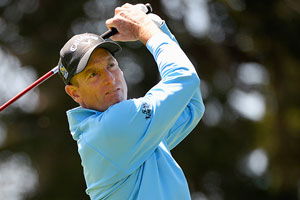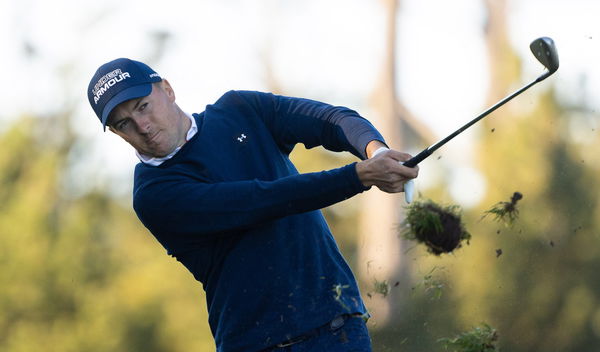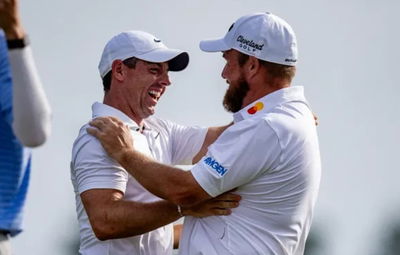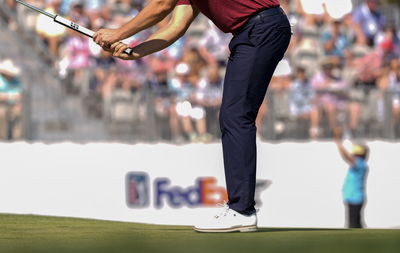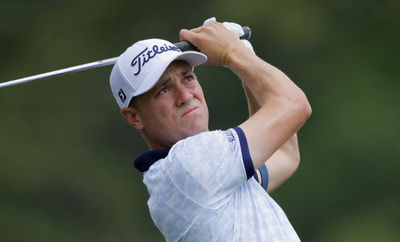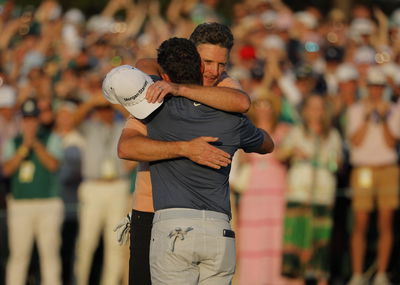Ian Poulter: swing sequence
The Englishman's classic two-plane swing is gold dust for amateurs
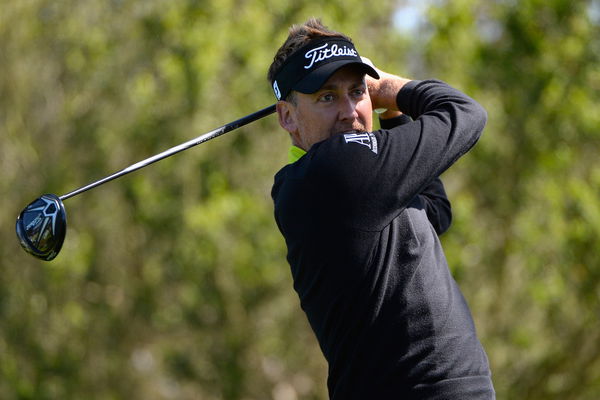
You can learn more from Ian Poulter's classic two-plane swing than you can from Rory McIlroy's modern moves, says Carl Watts of Mannings Heath Golf Club.
1. It's a very conventional setup. He stands fairly tall to the ball which is standard for a two-plane swinger (where the arms swing on a different axis to the shoulders). It's all very square, the toes, hips and shoulders are all flush to the target line. Squaring up is hugely overlooked by average golfers - about 95% of players are open with the body at address, and they aim their feet well right to compensate this. You could gain 20 yards from getting squared up.
Amateurs need to be aware of their swing type, so when watching the professionals they are able to learn from a player making the same moves.
The golf swing is constantly changing - just look on Tour and you will see Liquorice Allsorts out there. If you want a two-planer watch Bubba Watson, Colin Montgomerie, Jim Furyk or Poulter, while a one-plane can be seen from Rory McIlroy or Tiger Woods.
Most amateurs are two-plane swingers because the one-plane is a more athletic swing. The two-planer is more reliant on timing and rhythm, so more of your practice should be spent on that.
2. This is a one piece takeaway, and he's using his body to take the club away, which is similar to most Tour players. The club is well outside the line of his hands - most amateurs will have whipped their clubhead inside at this point.
3. We can see the clubhead is just above the handline and in comparison to say McIlroy or Woods, his shoulder turn is flatter because he's a two-planer. We can see his hands starting to rise, which he needs to do because he stands quite tall at address.
4. He's very much on plane, you can see the butt of the shaft pointing at the ball. If you could see this from another angle you would see he is moving his weight to the right side now. Most amateurs would be loading onto their left side right now.
5. The hands are high and you can see the angle of his shoulder line is almost perpendicular to the ground. His hands need to be high because of his flat turn.
6. Generally, a two-planer will swing a little bit past parallel as the hands are high, so we can see that he is in the classic position here.
7. On the start of the downswing, you can see from the high position he has dropped the club down straight down on the inside, which matches his shoulder line. This is a typical move for a two-planer, while a one-planer would be moving their body first, rather than dropping their hands.
A good drill is getting to your position at the top before pausing and learning to drop your hands. This is especially good if you want to eliminate a slice.
8. He's in a great position here. If you look at the shadow on the ground, you can see the shaft of the club is flush square with the target. He's brought the club down with timing and rhythm.
Poulter is a tall, lanky player so he can create a great amount of width in his swing and you can see there is still a 90 degree angle here with his arms and the shaft. When that gets released he'll unload the distance.
In this position, the two-planer won't have opened up as much as a one-planer, because the work is done by the arms.
9. You can see his weight is onto the left side now. His hips are well open.
10. He's starting to open up the rest of the body and he is releasing the clubhead and closing it over. A player with a two-plane swing will be rotating the clubhead after impact much more than a one-plane swinger.
We can start to see all the spikes in his right foot which is a tell tale sign that he has moved his weight onto his left side.
11. Here we can see very high hands which matches his back swing, and it's very typical of the two-planer again.
12. On the through swing, he looks like a typical pro in that he has completed his finish. It shows that he has completely committed to the shot. Most amateurs will not be able to hold this finish because they'll be off balance.
Commitment stems from confidence. Poults was a four handicapper at 16 and taught himself from books and magazine, so he will have built up a great deal of mental toughness after being told for years he would not make it. Being voted the most overrated player on Tour will only spur him on.
I played with him way back when he was first on the European Tour and he knew how to have fun - he had a pretty good balance of letting off stream and being able to turn it on and playing. Many really good players haven't made it because they haven't been able to do that.
Photos: Mark Newcombe/Visions in Golf
Words: Carl Watts
Former European Tour pro (1994 to 2001) and "High Performance Speaker"
Website: www.carlwattsgolf.co.uk and www.performanceboost.co.uk
Mannings Heath Golf Club offers two-day tuition breaks to help you improve your game.
